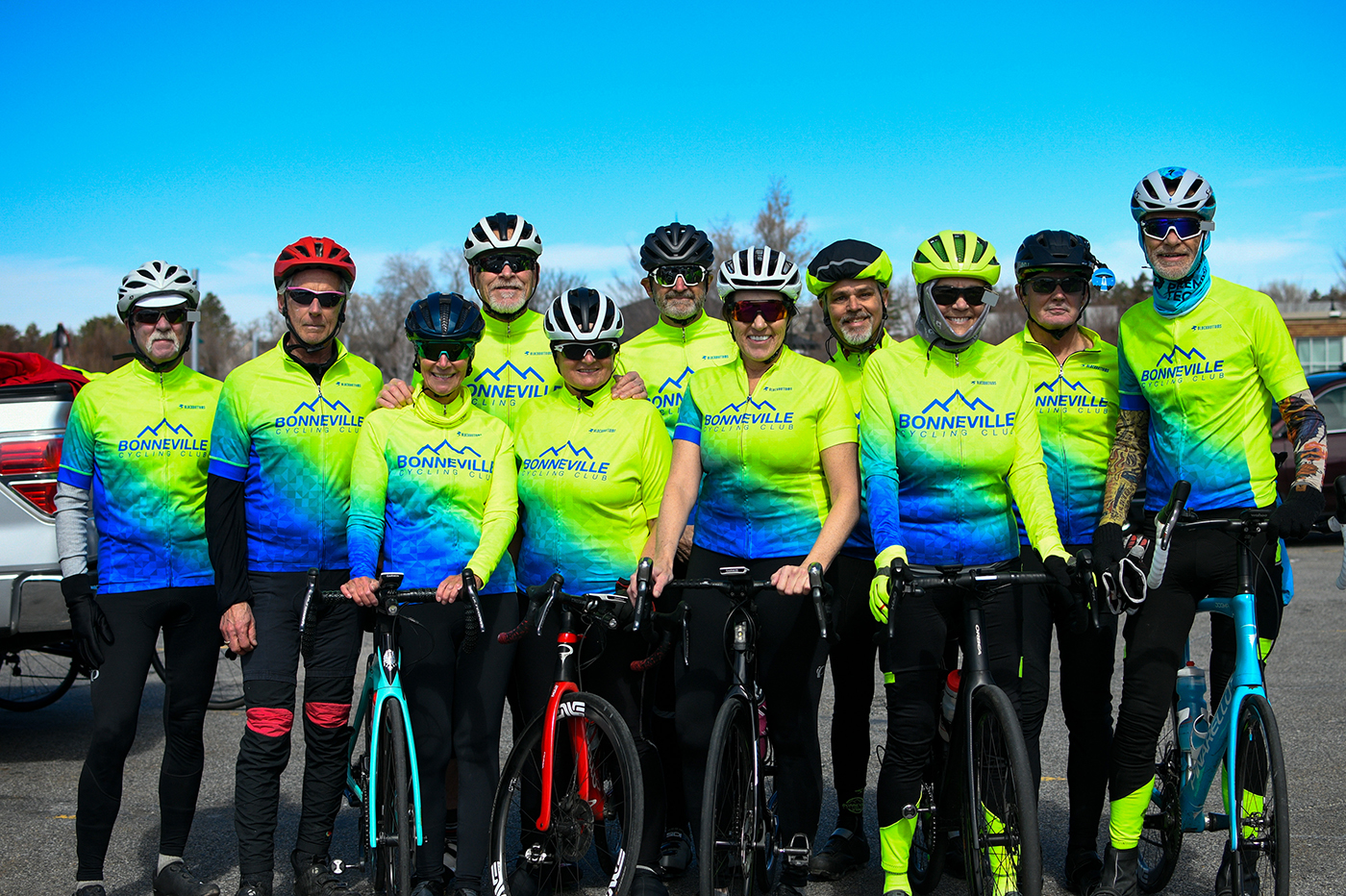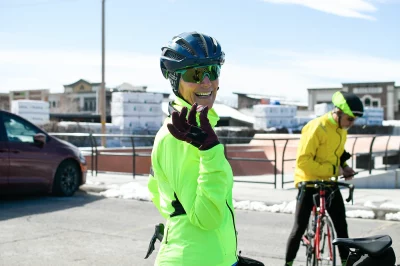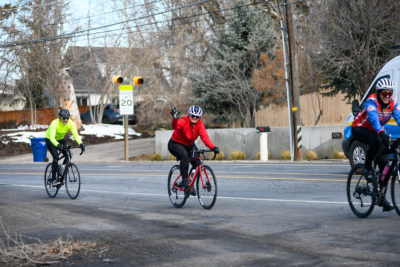
Bonneville Cycling Club
Bike / BMX
Penny Perkins wasn’t always an avid cyclist. When a friend told her about the Bonneville Cycling Club’s Southern Utah Parks tour, she was excited about the opportunity. On an old mountain bike, she joined the group for a weeklong journey through Zion and Bryce Canyon National Parks. “It was a camping trip, and I hadn’t trained for it,” Perkins says. “It was a real challenge, but I met a lot of fun people and decided I wanted to be more serious about riding.”

That was 27 years ago, and Perkins has been a member of Bonneville Cycling Club (BCC) ever since. This nonprofit organization is the largest cycling club in Utah, providing opportunities for cyclists of all abilities. Perkins isn’t the only member whose passion for cycling began with a trial by fire—Bee Lufkin started riding in the mid ’90s after a friend encouraged her to participate in Register’s Annual Great Bicycle Ride Across Iowa (RAGBRAI), a ride across the entire state of Iowa. “I bought a used bike from somebody, and six weeks later I joined Bonneville to ride,” Lufkin says.
“I bought a used bike from somebody, and six weeks later I joined Bonneville to ride.”
Current Club President Barbara Kane started cycling in 2017 when she joined her niece for LoToJa, a race through the mountains of Utah, Idaho and Wyoming that clocks in at over 200 miles. “We trained all summer,” Kane says. “I didn’t finish, but it was great. I found the Bonneville Cycling Club … and I just never left.”
Founded in 1987 as a small touring club, BCC has almost 300 members today. It welcomes everyone from seasoned cyclists training for big rides to novices hoping to learn more. “I think it’s cool because it’s not 20 somethings out there,” says Clarissa Weir. “It’s 45–80 year olds that are out there riding.”
BCC’s rides can be found on a jam-packed calendar on their website. There’s information about each one, including pace, mileage and elevation gain. There’s also a map so riders can see the entire route. “Every ride is color coded,” says Jason Koon, the Club’s IT Director (and Weir’s son). “We’ve got rides that are 100 miles or rides that are social.”
“We’ve met a lot of really nice people … Not only do we cycle, but in the offseason a group might go to the movies, they might get together for different things.”

Anyone interested can ride with the group, even if they’re not a member. Perks of membership, however, include events, shop discounts and awards earned for completing rides. “I think one of the big draws was the social aspect,” says Rikki DeMik, the Club’s Secretary. “We’ve met a lot of really nice people … Not only do we cycle, but in the offseason a group might go to the movies, they might get together for different things.”
Their biggest event of the year by far is Little Red Riding Hood, an annual women’s charity ride. Through a partnership with the Huntsman Cancer Institute, the ride raises money for breast and ovarian cancer research. Little Red takes place in the Cache Valley around Logan and began not long after the club’s inception. “When I first came into the club … there were about 60 women,” says Perkins. “In 2012, we kind of blew up on the internet and turned the ride into a lottery because we had so many women that wanted to participate.”
“In 2012, we kind of blew up on the internet and turned the ride into a lottery because we had so many women that wanted to participate.”
Riders come from all over the country for Little Red, and there are now around 3,500 participants. It’s a sprawling, two-day event with vendors, dinner and a costume contest. Perkins estimates that Little Red has raised over $500,000 for their cause. “All these women are there to support each other and have a good time,” says Stacy Walker, the Club’s Vice President. “You just can’t beat that. You can’t get that anywhere else.”
If you’re interested in becoming a member or joining for a ride, visit the BCC website at bccutah.org. To learn more about Little Red, go to lrrh.org.
Read more on local cycling:
Cranky’s Bike Shop Caters to Utah’s Cycling Community
Sweet Streets: Making Movement Safer for Salt Lake City